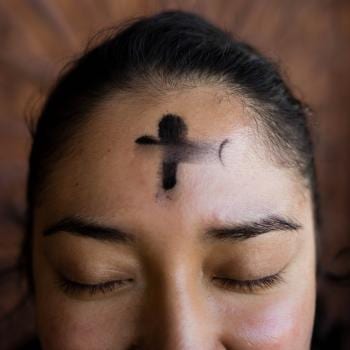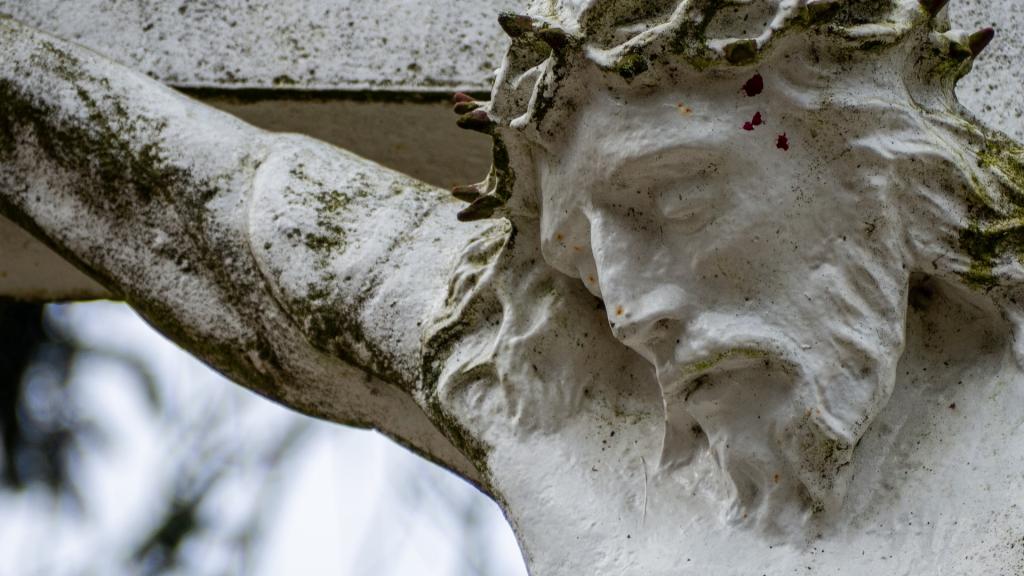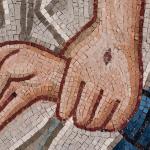 The ritual of Ash Wednesday always calls to mind one of my favorite “Far Side” cartoons by Gary Larson. It portrays two deer standing opposite one another in the forest. One has a target on his chest and the other deer observes, “Bummer of a birthmark, Hal!”
The ritual of Ash Wednesday always calls to mind one of my favorite “Far Side” cartoons by Gary Larson. It portrays two deer standing opposite one another in the forest. One has a target on his chest and the other deer observes, “Bummer of a birthmark, Hal!”
We do such a poor job of describing the purpose of Ash Wednesday that most people think that ought to be a liturgical greeting today. Stick it in there, perhaps, in place of exchanging the peace of Christ.
So, it seems to me, it is worth asking what this liturgy is all about. What do the ashes of Ash Wednesday represent and why do we smudge that birthmark onto our foreheads? For answers to those questions we need look no further than the invitation that you will hear shortly. I won’t read all of it, but the last paragraph of it says this:
I invite you, therefore, in the name of the Church, to the observance of a holy Lent, by self-examination and repentance; by prayer, fasting, and self-denial; and by reading and meditating on God’s holy Word. And, to make a right beginning of repentance, and as a mark of our mortal nature, let us now kneel before the Lord, our maker and redeemer.[1]
+The first thing to note is that Ash Wednesday is an invitation to participate in the work of God.
It is not a one-off service, unrelated to the rest of Christian practice and the church’s calendar. It’s an important effort to get us ready for what lies ahead – Lent, the Passion, Crucifixion and Resurrection.
We talk a lot about the church calendar, and for most people it is no more than a list of religious services that we celebrate each year. In the Catholic and Anglican traditions, many of those services are even described as “days of holy obligation.” That phrase has an important theological pedigree, but it gives the impression that days like these aren’t much more than a list of “must dos.”
In fact, the church calendar is really a part of the church’s spiritual practice. Services like this one are meant to get us into the practice of orienting our lives to time in a way that is different from the orientation that others bring to their lives. In effect, the church calendar says, “Other things might seem to be important when it comes to time and the way that we spend it, but as Christians we don’t organize our lives around the tax year, the school year, or the calendar year. Those are secondary considerations. We live in time marked by God’s work – work that we are invited to share.”
The church’s calendar reminds us of that opportunity. It lifts our eyes beyond the horizon of the small, domestic things that we all need to do and reminds us of the great things that we can do as members of the body of Christ.
+A second thing that is clear from the invitation is that this is a day of spiritual preparation.
I know that even those of us who are clergy differ about the value of “Ashes to Go” – the practice of taking this ritual outside the walls of the church where people are rushing off to do what they always do. But it’s the emphasis in the liturgy on spiritual preparation that makes me uncomfortable with that practice.
The purpose of Ash Wednesday is not to say to people running for a train, “We are here for you.” It isn’t the purpose of Ash Wednesday to say, “Hey, we know that you’d like to prepare, but you’re too busy or too important to stop. So, here, let me smudge your forehead.”
The purpose of Ash Wednesday is to say “Stop, pay attention, pray. There is something here of fundamental importance about our lives that cannot be grasped on the run.” No, it isn’t convenient, easy, and accessible. It can’t be folded into a routine. It can’t be done on a train platform in Glen Ellyn, and it certainly can’t be done dodging cars on the Eisenhower. If that were the case, we would all be spiritual giants. Spiritual practice is meant to put a hard stop on all our activity and, if it’s observance doesn’t slow you down, then it isn’t doing what it’s supposed to do.
+Third: As the invitation notes, we start today by reflecting on our sins and on our mortality.
Why should this matter so much and why do we have a service with this message as its centerpiece? To answer that question, we need to go back to Genesis, chapter 3, that great window into our spiritual state.
The story there describes God as giving Adam and Eve three gifts in the Garden of Eden: The freedom to roam the garden in God’s presence, the vocation to take care for it, and one prohibition — eating from the tree of the knowledge of good and evil. As you will recall, although they are given three gifts, the only thing that Adam and Eve focus on is the tree whose fruit they are told not to eat.[2]
So, this is a story about our unwillingness to trust God and what happens when we don’t. And what happens when we don’t trust God is that we sin by becoming our own gods and we die, because we cut ourselves off from God, which – as the first two chapters of Genesis make clear – is the only source of life.
Now, if we contemplate our sins and mortality far from the presence of God that can only lead one place: To a place marked by fear, by hopelessness, by jealousy and violence. That’s where it led in Cain and Abel’s case, for example, and that’s exactly why that is the very next story told in the book of Genesis.[3]
Ash Wednesday, by contrast, is God’s invitation to free us from that truth about ourselves. Safe in God’s presence, the Ash Wednesday liturgy reminds us of what might be the hardest truths we will ever learn, but it also offers the greatest news we can ever hear: “Apart from God, mortality and sin own you — know that — but also know that you were made by God for life in God. You are forgiven and free.”
You see, this service isn’t meant to make us miserable, and it isn’t the church’s way of promoting a bit of “you are a ‘poor worm’” theology. It’s about attention to the state of our spiritual lives and it’s about making “a right beginning” to a spiritual journey into God.
To put it another way — God is not trying to paint a target on your chest – or your forehead. God is trying to help you see life for what it is and can be, so that you can begin to revel and grow in God’s grace. So, it isn’t a bummer of a birthmark at all, Hal, and it isn’t one for us, my friends. It is truth, healing and hope.
[1] Prayer Book and Hymnal, Containing The Book of Common Prayer and The Hymnal 1982, According to the use of The Episcopal Church (New York: Church Publishing Incorporated, 1986): 265.
[2] See: Walter Brueggemann, Genesis, Interpretation: A Bible Commentary for Teaching and Preaching, James L. Mays, ed. (Atlanta: John Knox Press, 1982): 46ff. Brueggemann’s categories are vocation, permit, and prohibition. I’ve substituted “freedom” for “permit,” both because I think that it communicates more clearly and because there is true freedom, not just perit in God’s presence.
[3] He doesn’t put it quite this way and he is certainly not interested in the liturgical implications, but my thinking here about Genesis has been shaped by Jordan Peterson: https://www.youtube.com/watch?v=Ifi5KkXig3s















